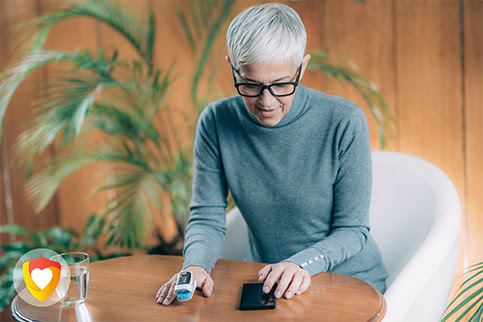The COVID-19 pandemic is disrupting healthcare like no other force in living memory and will have a significant and long-lasting impact on the operational and care delivery infrastructure of hospitals nationwide.
To avoid delays in care and expand inpatient and ICU capacity ahead of possible COVID-19 surges, I have been working with a health system in California to develop and deploy Hospital@Home, a 150-bed virtual hospital that provides high-quality, hospital-level, patient-centered care in the comfort of the patient’s home and bed. Using telehealth, our nurses and doctors are equipped to monitor patients from a command center at the hospital 24/7.
As a practicing physician and regional director for Vituity across five practice locations in California’s central valley, I’ve seen firsthand the complex juggling act that hospitals must maintain to provide safe, effective care during an incredibly uncertain time, while ensuring their communities know it’s not the time for patients to defer medical care, particularly for chronic or acute care conditions.
Fears over COVID-19 are keeping people away from visiting emergency departments (EDs) across the country, which presents incredible risks of delayed treatments in cases of heart attacks, strokes, and other major medical conditions.
Virtual Hospital Care Brings Efficiencies, Cost-Savings, and Patient Satisfaction
The process for Hospital@Home is simple but effective. Patients who present to the ED or a referral center with an eligible diagnosis are screened to ensure they meet the program’s inclusion criteria. Eligible diagnoses for Hospital@Home include congestive heart failure, COPD, and COVID-19 symptoms not requiring ICU care.
Patients are then transported home, where Vituity hospitalists manage them 24/7 via video visits and remote monitoring. Monitoring modalities include vital signs, pulse oximetry, and patient call lights, which are answered by a nurse in the command center located in a nearby hospital.
Patients receive daily face-to-face visits from the nursing team and have access to providers around the clock. If at any time a patient experiences a crisis or starts to deteriorate, the command center deploys a rapid response team equipped to stabilize the patient and transport them (if needed) to a higher level of care.
Hospital-at-home programs are common in Canada and the United Kingdom but have never gained traction in the United States due to cultural and reimbursement barriers. However, research suggests that such programs can reduce costs while boosting outcomes and patient satisfaction. In addition to freeing up inpatient resources during the pandemic, the program also reduces discharges to skilled nursing facilities, which are at increased risk for COVID-19 outbreaks.
Prioritizing Innovation Allows for Agile Response and Rapid Deployment of Solutions
To design Hospital@Home, we leveraged Vituity’s existing telehealth platforms, which manage high-risk patients discharged both home and to skilled nursing facilities. Vituity has invested in the expansion of its telehealth capabilities over the past seven years and has an experienced panel of telehealth physicians with long-standing relationships serving insurers, ACOs, employers, and national telehealth vendors.
With a model driven by physician leadership and engagement, Vituity is in a unique position to lead the management of this epidemic in hospitals across the nation. Our agile, innovative culture allows us to rapidly deploy clinical innovations that deliver and expand care in new ways. Now more than ever, it’s vitally important to help more patients gain safe access to needed care using technology to scale resources and expand each hospital’s reach.
Learn more about our telehealth solutions in response to COVID-19
Originally Published May 21, 2020























